
***Continued from Chapter 01 (Covered previously: What does it Entail, What is the difference, the start point, Managing Managers – A/ B/ C/ D/ E/ F/,)
Link to Chapter 01:
- Use An Apprenticeship Model
The best training for someone learning to become a manager is individualized attention from their boss. This should not just occur in meetings though. We should do real work together, looking for opportunities to explain what we are doing and how we are doing it. This will allow us to not only teach them but also to observe them in action. We are not going to sit in on all of their one-on-ones (micromanaging..!!) but we should make time to do things like participate in their team meetings, watch them give feedback, or conduct job interviews. Whenever we are observing them, give immediate feedback as long as it is not in front of others in a way that undermines them.
Find ways to see our managers in the act of managing (and then share feedback and observations). We can do this by:
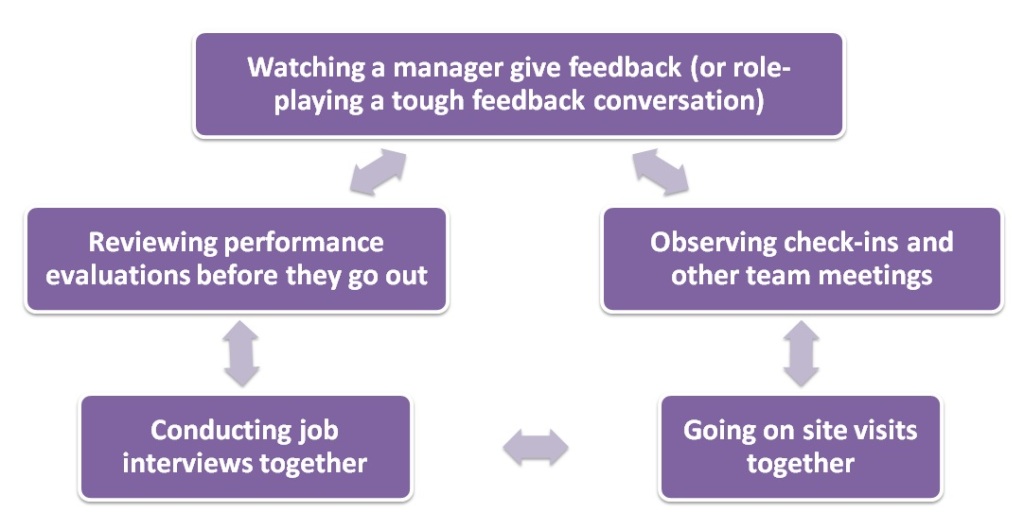
The purpose of observing or shadowing the people we manage is not just to give feedback—it can help us better understand their management and leadership style. It could even be an opportunity for us to learn from them. Pay attention to how they do things differently from us and appreciate those differences.
- Give Them Space & Know How We Are Doing
We do not want to dictate exactly how our employees do their job. We have to allow that individual to lead in his/ her own way. They need to figure out what is authentic to them. This is especially important when there are differences, such as gender, between us and our direct reports. For example, keep in mind that a woman cannot assert authority in the same way as a man and have the same impact.
We will be most supportive to our direct reports if we understand how we are performing as a coach and mentor. We can ask directly or use a 360 tool to assess how we are doing. Make sure that the questions get at indirectly and implicitly whether we are a good role model or not. Are we consistent in what we are asking for and what our expectations are? Also, do not wait for our annual performance review to ask for input. Feedback has to be much more immediate and connected to the work we are doing. So set up the expectation early on that we want to hear how we are doing.
- Get To Know Their Team
It can be tricky to know how much we should interact with our direct reports’ teams. On the one hand, we need to be familiar with the players so that we can give the manager relevant feedback and coaching. But, on the other hand, we do not want to undermine their authority. Do not allow ourselves to get into the situation where we are hearing things they are not telling their manager. Any interactions should be above board with the explicit goal of trying to better understand the team and help the manager. Be clear with everybody that we are aligned and there are no secrets. But do not close off all communication. If there is a serious concern, it’s best to have an open door policy.
Building authentic relationships with our direct report’s direct reports has four significant benefits:
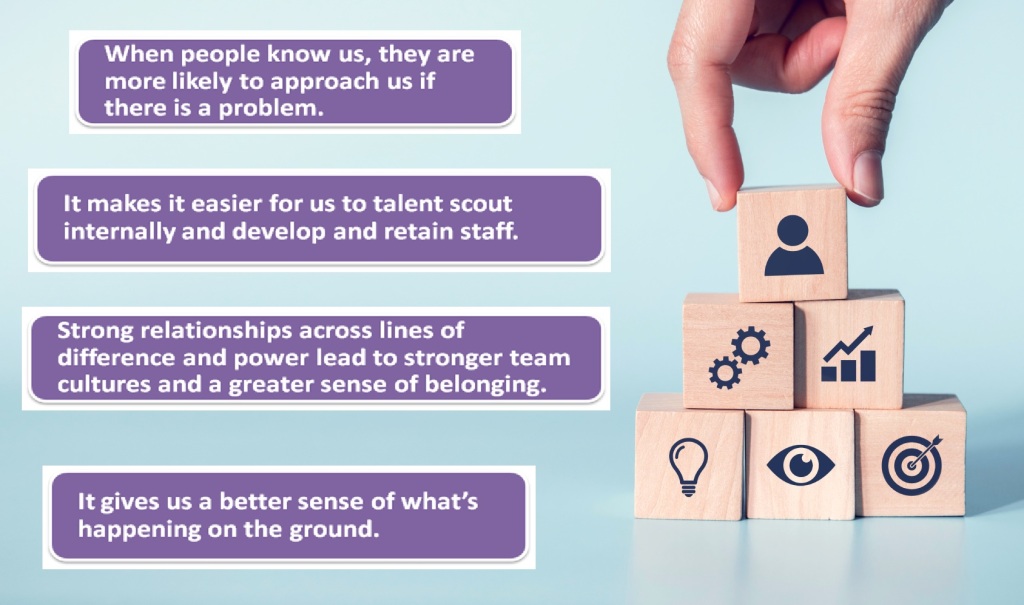
- We Are Not The Domain Expert Anymore
Domain expertise and domain leadership are not the same things. Knowledge, of course, is formative for decision-making and credibility, but it is not the driving force behind helping a group of people work together, get aligned around common objectives, and make progress. The latter depends on our ability to build trust, to communicate honestly, to figure out what motivates each person, and to lay out a clear path of where we are going, and why it’s important to get there. We are likely further from being the domain expert we once were than before. It feels unnerving, to say the least — we are not up-to-date with the latest technologies or trends as we would like to be. But keep in mind that our priority is not in our fluency in the domain. Our priority is making sure the people on our team are the domain experts, and that we are helping them do their best work to contribute to the organization.
- Make The Answer To “Where Are We Going?” Resoundingly Clear.

Vision is undoubtedly important to share as a leader. After all, our team needs to understand where they are going and why it is important to get there. But when we are managing managers, this vision needs to be exceedingly clear. Why? Because the folks we are managing will need to answer the question, “Where are we going?” for their direct reports. Our managers will need to find ways to align the personal visions of their team members with the organization’s shared vision. So if we have not made the answer to the question “Where are we going?” absurdly obvious, the vision becomes watered-down or distorted in some way once our managers share it with their direct reports. As a manager of managers, we must clarify, repeat, reinforce, evaluate, and again clarify and repeat the answer to “Where are we going?” over and over again.
Principles to Remember
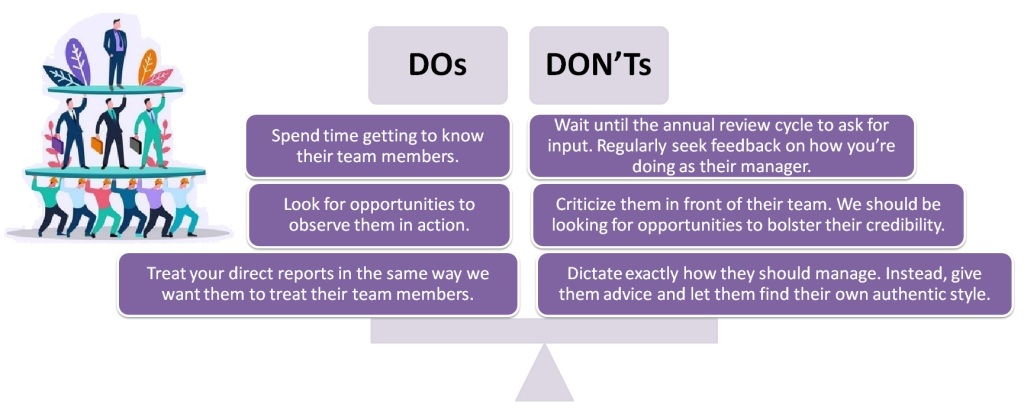
Growing Leaders, Not Just Leading Leaders
Naturally, as a manager of managers, part of our role involves growing other leaders in the organization. This does not necessarily mean putting formal training or mentorship programs in place (though, it can help). Growing other leaders can be as straightforward as carving out more dedicated time to ask questions like, ‘Is there anything outside your current role you would like to be contributing toward?’ or ‘What project have you been most proud to work on and why?’ Essentially, we want to consider:
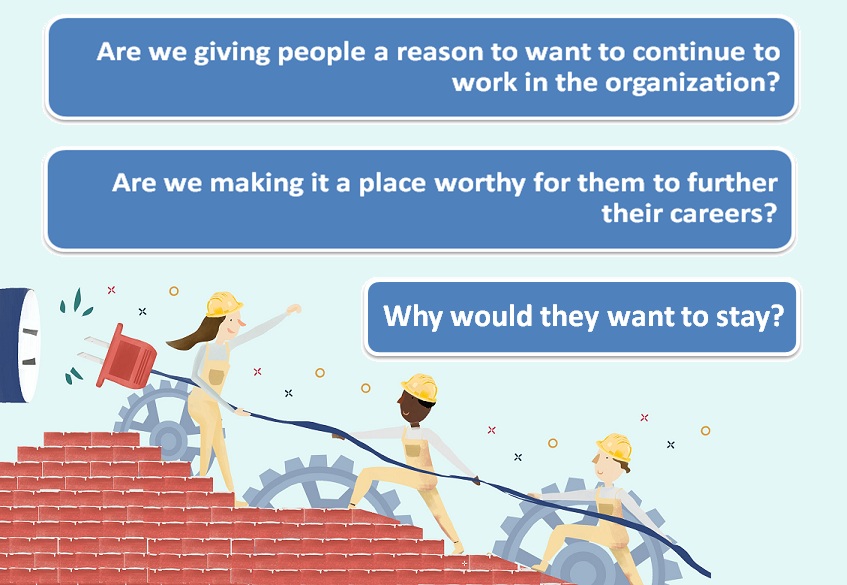
This also means personally exemplifying the kind of leadership we would like to see across the organization. Managers who are leading their teams are taking notes from us, watching us for cues on how to behave, make decisions, and handle situations. Our actions are not just affecting our direct reports anymore — they are affecting their direct reports as well. Everyone is learning from our actions, implicitly.
We will notice that managing managers is not wholly different from managing individual contributors. The fundamentals are the same. Whether we are a manager of managers or of individual contributors, we are still helping a team achieve its desired outcomes. Rather, the points of emphasis differ:

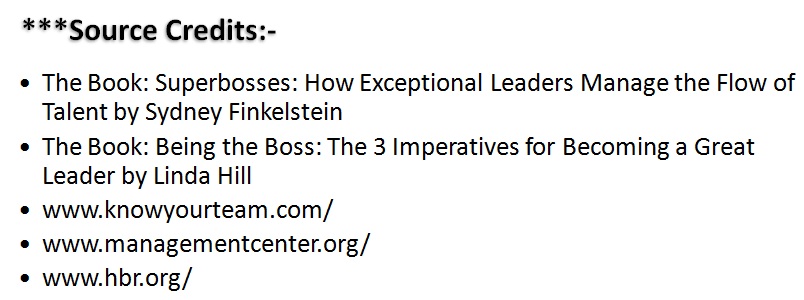
Content Curated By: Dr Shoury Kuttappa

